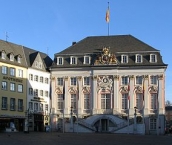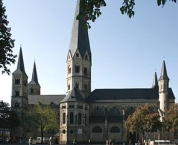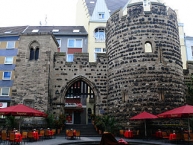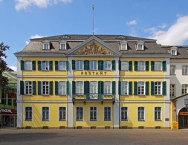Bonn
Worth visiting
Added on 10 Jan 2013,
last edited by biroto-Redaktion on 06 Sep 2016
Nearby cycle routes and tours
| Route name | Type | Dist. to route |
|---|---|---|
Route | 0,3 km | |
Route | 0,6 km | |
Route | 0,6 km | |
Route | 0,6 km | |
Route | 0,6 km | |
Route | 0,6 km | |
Route | 0,6 km | |
Route | 0,6 km | |
Route | 0,6 km | |
Route | 1,0 km | |
Route | 3,7 km | |
Tour | 0,0 km | |
Tour | 0,6 km | |
Tour | 0,6 km | |
Tour | 0,6 km | |
Tour | 0,6 km | |
Tour | 0,6 km | |
Tour | 0,6 km | |
Tour | 0,6 km | |
Tour | 0,6 km | |
Tour | 0,6 km | |
Tour | 0,6 km | |
Tour | 0,6 km | |
Tour | 0,6 km | |
Tour | 0,6 km | |
Tour | 0,6 km | |
Tour | 0,6 km | |
Tour | 0,6 km | |
Tour | 1,0 km | |
Tour | 1,0 km | |
Tour | 3,3 km | |
Tour | 3,3 km |
![]()
Please wait - map data are loading
Type of sights
Heritage building(s)
Name and address
Bonn
DE-53111 Bonn
GEO-data
Geodetic coordinates
50.73∎∎∎∎ 7.09∎∎∎∎
Elevation
63 m
Communication
Information about copyright | |
|---|---|
Rights owner | |
Rights characteristic / license | by-sa: CREATIVE COMMONS Attribution-ShareAlike |
Link to the description of the license | |
Image taken over from | commons.wikimedia.org/wiki/File:Rathaus-Bonn-2006-02-01-a.jpg |
Image has been uploaded | by biroto-Redaktion on 10 Jan 2013
|
Information about copyright | |
|---|---|
Rights owner | |
Rights characteristic / license | by-sa: CREATIVE COMMONS Attribution-ShareAlike |
Link to the description of the license | |
Image taken over from | commons.wikimedia.org/wiki/File:Bonner_muenster_20080509a.jpg |
Image has been uploaded | by biroto-Redaktion on 10 Jan 2013
|
Information about copyright | |
|---|---|
Rights owner | |
Rights characteristic / license | by-sa: CREATIVE COMMONS Attribution-ShareAlike |
Link to the description of the license | |
Image taken over from | |
Image has been uploaded | by biroto-Redaktion on 10 Jan 2013
|
Information about copyright | |
|---|---|
Rights owner | |
Rights characteristic / license | by-sa: CREATIVE COMMONS Attribution-ShareAlike |
Link to the description of the license | |
Image taken over from | commons.wikimedia.org/wiki/File:Bonn_Altstadt_Old_Post_Office.jpg |
Image has been uploaded | by biroto-Redaktion on 10 Jan 2013
|
Bonn is one of the largest cities in the Cologne Lowland, second only to Cologne itself in terms of population count. Despite the size, it maintains a cozy, relaxed atmosphere of a small town, featuring mostly low-rise buildings, a charming old town and a lot of greenery. Located only 28 km south of Cologne up the Rhine river, it has a wealth of museums and points of interest.
Bonn was the de facto capital of the pre-reunification Federal Republic of Germany ("West Germany") from 1949 through 1990. The city still holds the seats of many federal institutions, and remains a popular choice for large-scale exhibitions and conferences. Bonn is also the birthplace of Ludwig van Beethoven, who is celebrated throughout the city with several memorials and events.
You should consider a trip to Bonn if you like atmospheric smaller cities with many students and a rich culture. Admirers call it Italy's most northern city because of its street culture with many cafes and beer gardens in the summer.
Understand
Bonn's beginning dates between 13-9 BC when Romans began building roads, bridges, and fortresses at a location known as "Bonna." One well-documented event was the martyrdom of two Thebaean legionaries. The Thebaean Legion was an all Christian legion, which refused to worship the emperor as a god. As punishment, the Thebaean Legion's commander, Mauritius was executed in St. Moritz as were many other Thebaean legionaries including Cassius and Florentius, Bonn's patron saints, who were martyred at the location of the present-day Münster basilica.
After the Romans left, the town had a very tumultuous history. Bonn has been destroyed and pummeled on so many occasions that it nearly became a pastime. Norman invaders were the first to burn the town to the ground in 881 and again in 892. In 1198, King Philip of Swabia and Duke Heinrich von Brabant laid siege to Bonn. In 1244 Konrad von Hochstaden, archbishop of Cologne ordered Bonn to be fortified. The reasons for fortification may have been for the Archbishop's protection as he had apparently begun fighting with Cologne's leaders and often resided in Bonn after the dispute. In 1288 under Sigfried II von Westerburg the archbishopric was transferred from Cologne to Bonn, which has since been transferred back to Cologne.
In 1582 Archbishop Gebhard Truchsess von Waldburg converted to Calvinism and refused to give up his position as elector. In February of 1583 Waldburg married and was in April of the same year excommunicated by Pope Gregory XIII. After the Truschessian War Gebhard fled to Strasbourg, but not before Bonn felt the rapture of Bavarian troops, who blew up the Godesberg (the archbishop's residence) with 1,500 pounds of gunpowder. While the town survived the Thirty Years' War Bonn was completely destroyed in 1689 as a result of the War of the Grand Alliance.
In December 1770 Bonn's most famous son, Ludwig van Beethoven, was born on Bonngasse. Bonn is probably best known as Beethoven's birthplace and this fact is well advertised by the city despite Beethoven's vehement disgust towards his hometown. Beethoven spent some time in Vienna hoping to study with Mozart, but after his mother's death he was forced to return to Bonn for five years to raise his two younger brothers since his alcoholic father was unable to. In 1792 Beethoven returned to Vienna and never came back to Bonn.
While Bonn is by no means a "village" its selection as seat of the government of the new west German state in 1949 was precisely because the partition of Germany should appear to be temporary and thus more important or symbolic cities such as Cologne, Munich or Hamburg were soon out of consideration. However in the final decision the fact that Konrad Adenauer had a house nearby may well have played some if not the decisive role, where Bonn beat out Frankfurt by a single vote. See also Cold War Europe.
After reunification it was seriously considered to keep the government in town, especially as the previously "provisional" facilites had just been upgraded bit by bit in the late 1980s. However in another close vote the Bundestag decided to move most agencies to Berlin, while some would stay in Bonn much to the chagrin of people who see the double facilities as needless pork in favor of Bonn.
See
- ⊙Old Town Hall (Altes Rathaus), Markt (at the market place). Built in 1737 in Rococo style.
- ⊙Bonner Münster, Gerhard-von-Are Straße 5, ☎ +49 228 98588 0. Church 7AM-7PM, cloister 9AM-5PM. A beautiful basilica, in Bonn's city center. Only Bonn Information or the Bonner Münster Foundation are permitted to arrange guided tours to the basilica. The "Bonn Information" organization can arrange for non-German tours.
- The Beethoven Monument stands on the Münsterplatz.
- ⊙Kreuzbergkirche, Stationsweg 21. In summer 9AM–6PM, winter 9AM-5PM. Visit of the Holy Staircase 9AM–5PM. The church is a beautiful example of baroque architecture. Today, the church serves as both a church and a German language and culture school, but is probably best known for the "Heiliger Steige." The church was erected in 1627/1628 on the orders of the archbishop to replace an older chapel. In 1746 Elector Clemens August von Bavarian donated the "Heiliger Steige", or holy staircase, which, according to legend has pieces of the cross the crucified Jesus set into the stone. Small brass crosses on the second, eleventh, and last steps mark the spots where the pieces of the cross are supposed to be set. Beautiful view over Bonn.
- ⊙Universität Bonn (University Main Building), Regina Pacis Weg 3. 8AM-10PM. It is in the former residential palace of the Archbishop and Kurfürst of Cologne, built by Enrico Zuccalli from 1697-1705. It stretches from Kaiserplatz to the Rhine (Alter Zoll) and crosses two streets (Stockenstraße and Adenauerallee), the gates are called Stockentor and Koblenzer Tor. The building looks impressive and beautiful from the outside, but could use a renovation inside. Feel free to walk in. Best view on the palace is from the Hofgarten side. The Hofgarten is a park directly in front of the palace and a place for students to meet and relax in the summer between and after lectures. During Bonn's times as capital, it saw all the major anti-government demonstrations.
- ⊙Poppelsdorfer Schloss and Botanical Gardens, Crossing of Poppelsdorfer and Meckenheimer Allee. Apr-Oct 10AM-6PM, Nov-Mar 10AM-4PM, Sa closed. Was built as a resort in rococo style for the Archbishop of Cologne Clemens August from 1715 to 1753 by Robert de Cotte and today houses the university's mineral collection, several science departments and the botanical gardens. The palace itself is not open to the public. The botanical gardens next to the palace are a peaceful and beautiful place to relax, have a look at the sunbathing turtles at the pool. The gardens cultivate about 10.000 plant species. The green houses were recently renovated. Coming from the city center, walk there from the University Main Building via Kaiserplatz and Poppelsdorfer Allee. Free, on Sunday and holidays €3 (reduced €1).
- ⊙Alter Friedhof, Berliner Platz (Stop Stadthaus). The old cemetery, created in 1715, is an atmospheric cemetery with many old graves, among them the graves of Robert and Clara Schumann, Ernst Moritz Arndt, Friedrich Schiller's wife Charlotte von Schiller and their son.
- Südstadt. The southern part of the city owns impressively beautiful buildings from the late 19th and early 20th century in ancient alleys. You can get an English walking tour brochure from the Tourist Information.
- ⊙Doppelkirche in Schwarzrheindorf, Dixstr. 41 (on the other side (some say the wrong side) of Bonn in the suburb of Schwarzrheindorf). Tu-Sa 9AM-6:30PM (9AM-5PM in winter), Su 11AM-6:30PM, M closed. The double church St. Maria (upper level) and St. Clemens (lower level) was built in 1151 and is due to its rich ceiling paintings of saints and apocalyptic scenes one of the most outstanding romanic churches in Germany. Take Bus no. 640 or 550 to Schwarzrheindorf. You can walk back to Bonn Beuel or Bonn's city centre by following the dam and crossing the Kennedy bridge, it is a popular promenade. Take a break at Bahnhöfchen or Rheinlust near the bridge.
- ⊙Jewish Cemetery. The old and small Jewish Cemetery is in Bonn Schwarzrheindorf between the Doppelkirche and the North Bridge, you can access it from the dam which is a popular promenade.
- ⊙Rheinauen (take line 66 to Bad Honnef/Königswinter stop Rheinauen). A big park in the south of Bonn directly behind the Post Tower. You can walk there from the city centre following the rhine promenade, it is about 3 km and very popular on the weekend.
- ⊙Deutsche Welle World Headquarters and Radio, Kurt-Schumacher-Straße 3, ☎ +49 228 429 2538. Tours leave M-Fr 10AM, 2PM. Deutsche Welle (Also known simply as DW) is Germany's international media outlet and is now housed in what was supposed to be the German parliament's home. After the German government decided to move the building was taken over by DW to become its world headquarters and home to its radio operations. Tours are conducted in German, however, tours can be arranged in English, French, Spanish, or Portuguese when requested in advance. DW asks that anyone wishing to take a tour reserve at least two months in advance and may require you to be with a group of 6-20 persons, however, they may arrange an exception if contacted. Tours last an average of two hours. Tours are free.
- Kottenforst. A big nature park between Bonn (quarters Venusberg, Bad Godesberg) up to the cities of Euskirchen and Wachtberg. It is appr. 4.000 ha and popular for walking tours. The nearest ones starts at Waldesruh on Venusberg (which has also a nice cafe). Another route starts at Bahnhof Kottenforst (a pretty frame house) which you can reach by taking a train to Euskirchen, but the train only stops there on weekends).
The former capital
- ⊙Palais Schaumburg, Adenauerallee 139/141. Until 2001 it was used to house the office of West Germany's chancellor and the chancellor's cabinet. Today, the building is used as a secondary headquarters for the chancellor.
- ⊙Villa Hammerschmidt, Adenauerallee 135. Between 1951-1994 the Villa Hammerschmidt served as the residence of the West German President, however, since the relocation of the German government to Berlin the building serves as a secondary residence for the president.
Museums and Galleries
The Bonn Regio WelcomeCards offers free admission to most public museums in Bonn (including all of those listed below), free rides on buses and trams on the local public transport system (VRS), and discounts to other tourist attractions. The validity for both individual or family WelcomeCards are in increments of 24 hours and can be purchased online, at the Tourismus offices or participating hotels. The 24-hour individual ticket cost €9.
- ⊙Ägyptisches Museum, Regina-Pacis-Weg 7 (University of Bonn. U-Bahn stop: Universität / Markt), ☎ +49 228 739710. Hours: Tues. - Sun.: Noon - 18. Closed Mondays and holidays. The University of Bonn-administered Egyptian Museum. Admission: Adults: €3.50, Students and Children (7 years+): €2.50, Family ticket (2 adults and 3 children): €9.
- ⊙Akademisches Kunstmuseum, Am Hofgarten 21, 53113 Bonn. Tu&Th 10-16, Sun 11-16, closed on public holidays and in August. the academic museum of antiquies is situated at the other end of the Hofgarten park, directly opposite to the main building. It is a beautiful building, constructed from 1823-1830 and designed by Karl Friedrich Schinkel and Hermann Friedrich Waesemann, and hosts one of the largest collections of plaster casts of ancient Greek and Roman sculptures in the world. Entrance fee €1,50, free admission for students.
- ⊙Arithmeum, Lennéstrasse 2, 53113 Bonn (Subway Stop: Universität / Markt Busses and Trams: Hauptbahnhof), ☎ +49 228 738790. Tuesday - Sunday 11AM-06PM. The Arithmeum features a collection of historical mechanical calculating machines, which today comprises more than 1200 pieces and is the largest in the world. It features the history of calculators, from ancient abacuses and ropes with knots, until the modern day PC. The design of the building itself and its colorful art collection are an added bonus. €3 / €2.
- ⊙Beethoven-Haus (Beethoven House), Bonngasse 18-26 (Take trams (62 or 66) or buses to Bertha-von-Suttner-Platz / Beethoven-Haus), ☎ +49 228 98175 0. 1 Apr-31 Oct M-Sa 10AM-6PM, Su & holidays: 11AM-6PM; 1 Nov-31 Mar M-Sa 10AM-5PM, Su & holidays 11AM-5PM; closed New Year's Day, Carnival-Thursday, the Monday preceding Ash Wednesday, Carnival-Tuesday, Good Friday, Easter Sunday and 24-26 Dec, New Year's eve. The birthplace of the great composer is now a museum dedicated to his life and work. The museum even has a lock of Beethoven's hair on display. Somewhat ironically Bonn advertises their hometown son despite Beethoven's vehement hatred for his hometown. With a competent docent this museum is well worth the visit and is more interesting than Mozart's Geburtshaus in Salzburg
 .
. - ⊙August Macke Haus, Bornheimer Straße 96 (U-Bahn stop: Bonn West), ☎ +49 228 655531. Hours: Tues - Fri. 2:30-6PM. Sa, Sun, & holidays 11AM-5PM. August Macke, a leading member of Der Blaue Reiter, a famous expressionist group, lived in this house with his wife, Elizabeth, for a few years and produced over 400 works in the top floor studio. Admission (regular/reduced): Adults: €3.50 / €2.50, Children: €2.50/ €1.50.
- ⊙Haus der Geschichte (House of the History of the Federal Republic of Germany), Willy-Brandt-Allee 14 (U-Bahn linien 16, 63, 66, „Heussallee / Museumsmeile“), ☎ +49 228 9165 0. Tue - Fri 9AM-7PM, Sat, Sun and Christmas season 10AM-6PM, closed on December 24, and 31. An interesting explanation of German history after 1945 that is constantly updated. A must if you are interested in history or politics. Exhibitions are presented in German only, but guide booklets with English translations are available for a couple Euros, and guided tours for school groups conducted in English are available free of charge when prebooked. Free admission. Tour groups with a guide ☎ +49 228 9165 400.
- ⊙Kunstmuseum Bonn, Friedrich-Ebert-Allee 2 (Museumsmeile. U-Bahn stop: Heussallee. Bus 610 will also stop at Heussallee), ☎ +49 228 776260. Tues. – Sun.: 11AM-6PM, Wed.: 11AM-9PM. Closed on Mondays; February 23 and 27; December 24, 25, and 31. Admission: Adults: €3. Students, Children (over 6), and Bonn-Card holders: €1.50. Family ticket: €6.
- ⊙Kunst- und Ausstellungshalle der Bundesrepublik Deutschland, Friedrich-Ebert-Allee 4, ☎ +49 228 9171 0. hosts permanently changing exhibitions which range from visual art and cultural history up to science and technology. Most of them are world class and definitely worth a visit.
- ⊙Deutsches Museum Bonn, Ahrstraße 45 (U-Bahn stop: Hochkreuz/Deutsches Museum Bonn), ☎ +49 228 302 255. Tues. - Sun.: 10-18. Closed Mondays; Thursday before Fat Tuesday; Fat Tuesday (Shrove Tuesday); Good Friday; May 1; December 24, 25, and 31. Admission: Regular: €4, Children (6 years+): €2.50, Family ticket: €7.
- ⊙Zoologisches Forschungsmuseum Alexander Koenig (Zoological Research Museum Alexander Koenig), Adenauerallee 160, ☎ +49 228 9122 211. Hours: Tue, Thurs. - Sun.: 10:00-18. Wed.: 10.00-21. Closed most Mondays (except on legal holidays); Christmas Eve, Christmas Day, and New Year's Eve. Zoological museum. Admission: Regular: €3, Discounter (Seniors, students): €1.50.
- Frauenmuseum, Im Krausfeld 10, 53113 Bonn. Tu. - Sat. 14-18, Sun. 11-18, closed on Mondays. The first museum in Europe dedicated to women and their work. Changing exhibitions. Adults €6, Students €3.
- Heimatmuseum Beuel, Wagnergasse 2-4, 53225 Bonn. Sat. & Sun. 15-18. Museum on local history. The museum was established in 1986 on the initiative of Beuel's Local Historical Society. Free.
- Rheinisches Landesmuseum, Colmantstr. 14-16, 53115 Bonn. Tu. - Fr. & Sun. 11 - 18, Sat. 13 - 18, Mon. closed. Museum of art and archeology, run by the Rhineland Landscape Association.
Sleep
Inside the range of 4 km:
- ⊙ Hotel Löhndorf, Bonn, PC VI
"... you can safely accommodate your bike within the house in our bike corner."
- ⊙ Rheinland-das Hotel an der Kennedybrücke, Bonn, PC V - VI
- ⊙ Max Hostel Bonn, Bonn, PC IV
- ⊙ Hotel garni Römerhof, Bonn, PC IV - VI
- ⊙ Hotel Astoria Bonn, Bonn
- ⊙ Haus Müllestumpe, Bonn, PC V - VI
"... We are happy to provide our guests with our lockable bicycle garage for bicycles."
- ⊙ Hotel-Restaurant Zur Post, Bonn, PC VI - VIII
"... The Hotel Zur Post has an underground car park in which you can accommodate your bicycles. Since the gate is closed, the garage should actually be secure enough."
- ⊙ BaseCamp Bonn, Bonn, PC IV - VI
- ⊙ Jugendherberge Bonn, Bonn
Useful
Inside the range of 4 km:
- ⊙ Tourist-Information Bonn, Bonn
- ⊙ Fähre Mondorf - Graurheindorf, Bonn
Information about copyright
Rights characteristic / license
by-sa: CREATIVE COMMONS Attribution-ShareAlike
Link to the description of the license
Input taken over from:
Wikivoyage contributors, 'Bonn', Wikivoyage, The FREE worldwide travel guide that anyone can edit, 2 September 2016, 22:21 UTC, <https://en.wikivoyage.org/w/index.php?title=Bonn&oldid=3044118> [accessed 6 September 2016]
taken over / edited on
06 Sep 2016
taken over / edited by
Nearby cycle routes and tours
| Route name | Type | Dist. to route |
|---|---|---|
Route | 0,3 km | |
Route | 0,6 km | |
Route | 0,6 km | |
Route | 0,6 km | |
Route | 0,6 km | |
Route | 0,6 km | |
Route | 0,6 km | |
Route | 0,6 km | |
Route | 0,6 km | |
Route | 1,0 km | |
Route | 3,7 km | |
Tour | 0,0 km | |
Tour | 0,6 km | |
Tour | 0,6 km | |
Tour | 0,6 km | |
Tour | 0,6 km | |
Tour | 0,6 km | |
Tour | 0,6 km | |
Tour | 0,6 km | |
Tour | 0,6 km | |
Tour | 0,6 km | |
Tour | 0,6 km | |
Tour | 0,6 km | |
Tour | 0,6 km | |
Tour | 0,6 km | |
Tour | 0,6 km | |
Tour | 0,6 km | |
Tour | 0,6 km | |
Tour | 1,0 km | |
Tour | 1,0 km | |
Tour | 3,3 km | |
Tour | 3,3 km |
Added on 10 Jan 2013,
last edited by biroto-Redaktion on 06 Sep 2016




